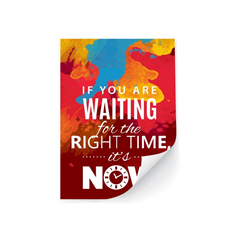1. Simplify Design: Opt for clean and simple designs that require fewer resources and printing costs. Minimalistic designs can often be just as impactful.
2. Use Free or Affordable Tools: Utilize free or low-cost design software like Canva or Lucidpress, which offer user-friendly templates for brochures.
3. DIY Photography: Take your own high-quality photos using a smartphone or an affordable digital camera. Authentic images can add a personal touch to your brochure.
4. Repurpose Content: Reus content from existing materials like flyers, presentations, or blog posts to save time and effort.
5. Standard Paper Sizes: Design your brochure using standard paper sizes to minimize printing costs. Common sizes like letter or A4 are more cost-effective.
6. Digital Distribution: Opt for digital distribution instead of printing. Create a digital brochure in PDF format that can be easily shared via email, website, or social media.
7. Optimize Printing: If printing is necessary, choose economical paper options and printing methods. Consider digital printing for smaller quantities and offset printing for larger runs.
8. DIY Printing: If you have access to a high-quality printer, consider printing in-house for small quantities. This can save on printing costs.
9. Black and White Printing: For simple brochures, consider printing in black and white or grayscale. This can be more cost-effective than full-color printing.
10. Online Printing Services: Utilize online printing services that offer competitive pricing and discounts for bulk orders. Compare options to find the best deal.
11. Limit Fonts and Colors: Use a limited color palette and choose free or common fonts to avoid extra costs. Limiting colors can also simplify the printing process.
12. Prioritize Content: Focus on concise and compelling content. Well-crafted messaging can make a big impact, even with minimal design elements.
13. DIY Illustrations: If you’re artistically inclined, create your own illustrations to add a unique touch to your brochure.
14. Template Libraries: Explore free or low-cost template libraries for brochure designs. Customize them to fit your brand and content.
15. Collaborate: Collaborate with local artists, designers, or students who may offer their services at a lower cost in exchange for exposure or experience.
16. Test and Iterate: Before finalizing the design, test a sample print or digital version to catch any issues or improvements needed.
Remember, creativity and strategic thinking are key to designing impactful brochures on a budget. Focus on what matters most for your audience and goals, and don’t be afraid to think outside the box to achieve a polished result.


















